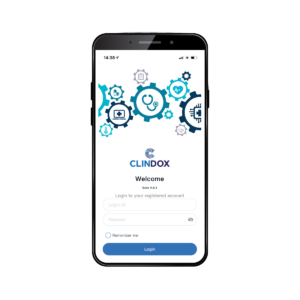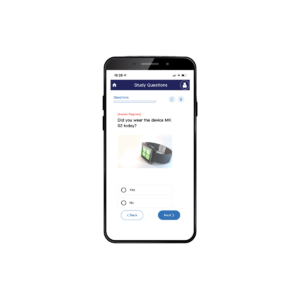In the first of our series of articles on Managing Data and eClinical solutions for Medical Device Companies, the CRFWEB team discuss the current market situation with respect to the impact of the MDR regulations in Europe. We hope you enjoy….
ARTICLE 1 – THE CURRENT MARKET
Y2K on the 31st of December 1999 has some interesting parallels with MDR’s arrival on 26th May 2021. For several years before that first resonant date, there were many dire warnings about the coming chaos and catastrophe to be wrought by the Millennium Bug. It was a classic example of a “known unknown” – people could clearly understand what the issue was in theory, but in practice had very little knowledge about how it would impact on their businesses due to the widespread reliance on poorly documented and dimly understood legacy systems. Nothing like a global tech panic to sell expensive reports, high-end consultancy, and conference seats.
But as the clocked ticked down, the panic dissipated as it became clear that the vast majority of companies had quietly gone about the unglamourous, painstaking business of gap analysis and the formulation of mitigation plans, which were then duly delivered in time to meet a fixed, immovable deadline. High profile failures were notable largely by their absence.

Lack of clarity over MDR still a widespread concern
Similarly, with the fast approaching Date of Application (DoA) for MDR. When the legislation was first published in 2017, there was much anxiety and confusion about what this would mean for manufacturers. The Devil is always in the detail and the detail was sorely lacking – lots of known unknowns to contend with. Although many of these known unknowns have been whittled away over time, a significant number of companies are still unclear about what the exact implications of MDR are likely to be for them. A recently reported industry-wide vendor survey suggests that over 80% of the industry still finds MDR “very challenging” with nearly a third believing the impact on revenues will be between 5% and 10%. More than 1 in 10 think the true cost will be higher than that. Over 60% cite lack of clarity as one of them main issues they face. A respected regulatory consultancy also recently reported that under MDR about 10% of devices are likely to need reclassification to a higher risk class under the new, expanded rules (see MDR section 1 and Annexe VIII), some 50,000 devices.

New devices subject to legislation for the first time
The rule changes will also mean that a range of products will now be subject to regulation under MDR for the first time (see Annex XVI); these are:
- Contact lenses or other items intended to be introduced into or onto the eye.
- Products intended to be totally or partially introduced into the human body through surgically invasive means for the purpose of modifying the anatomy or fixation of body parts with the exception of tattooing products and piercings.
- Substances, combinations of substances, or items intended to be used for facial or other dermal or mucous membrane filling by subcutaneous, submucous or intradermal injection or other introduction, excluding those for tattooing.
- Equipment intended to be used to reduce, remove or destroy adipose tissue, such as equipment for liposuction, lipolysis or lipoplasty.
- High intensity electromagnetic radiation (e.g. infra-red, visible light and ultra-violet) emitting equipment intended for use on the human body, including coherent and non-coherent sources, monochromatic and broad spectrum, such as lasers and intense pulsed light equipment, for skin resurfacing, tattoo or hair removal or other skin treatment.
- Equipment intended for brain stimulation that apply electrical currents or magnetic or electromagnetic fields that penetrate the cranium to modify neuronal activity in the brain.

Bottom line – more studies under MDR
In summary, the “Essential Requirements” of MDD that underpin achieving conformity have been superseded by the more detailed and exacting General Safety Performance Requirements (GSPR) under MDR (see MDR Annexe 1). GSPR identifies new conditions that will need to be addressed for most legacy devices (i.e. those already CE marked under MDD). Existing products must be re-certified in accordance with the new regulations.
MDR has also introduced closely defined back-office requirements such as integrated QMS and Risk Management systems alongside more demanding regulation concerning labelling, Standard Operating Procedures and Documentation.
However, the main focus for improving device safety will be through more rigorous clinical evaluation of products. Specifically, there will be a much greater responsibility on manufacturers to provide effective life-time vigilance via Post Market Surveillance (PMS). In most instances companies will be expected to provide clinical data obtained via post-market clinical follow-up (PMCF), certainly for Class II devices and upwards. It is important to note that data previously deemed as acceptable under MDD for PMCF may no longer be sufficient under the MDR and therefore establishing the continued validity of historical data is clearly vital. Consequently, many companies have found that they need to establish PMCF studies or investigations on their products where none have been explicitly required previously.

The motivation behind MDR was to improve patient safety but also to address the increasingly widespread “problems with divergent interpretations of the current Directives”. MDR may have largely solved the problem of divergent interpretations for pre-clinical investigations required to achieve conformity, as well as for PMCF Investigations that “involve submitting subjects to procedures additional to those performed under the normal conditions of use of the device and those additional procedures are invasive or burdensome.” However, for PMCF investigations where no such additional procedures are envisaged, the situation is less clear. In these cases local regulatory requirements need to be met – in each country. This will be undoubtedly extremely onerous for the study sponsor.
The burden of this intensified scrutiny will be further exacerbated for new products by greater constraints under MDR as to the nature and quality of data that can be cited to support claims of acceptable equivalence. For example, if a manufacturer of an implantable or class III device seeks to claim equivalence to a device on the market made by another manufacturer, then in addition to meeting the requirements of MDR Article 61 (4), the manufacturer must have a contractual relationship that explicitly allows full access to relevant technical documentation of the existing equivalent device on ongoing basis, with evidence of such a relationship provided by the equivalent device manufacturer to the Notified Body. Furthermore, the equivalent device must also have been certified under MDR; it will not be possible for a manufacturer to claim equivalence with a device manufactured by a different company currently available on the market under MDD. However, it may be possible to use the equivalence pathway using an equivalent device certified under MDD if the manufacturer of both devices is the same.
Inevitably, then, many more products – both new and existing – will require clinical investigations in order to achieve conformity under MDR than would have been the case under MDD.
Notified Bodies under pressure to deliver
The role of Notified Bodies has extended under MDR and they will exercise a greater level of decision making in the process to achieve conformity. The Notified Bodies are already concerned and vocal about their capacity to support the sector achieve compliance over the next 3 years. Their trade body, Team-NB conducted a survey and found that over 7,000 MDD certificates and about 200 active implantable medical device certificates are due to expire in 2024… the year ALL certificates issued under MDD become void as part of the migration to MDR. That means notified bodies would need to process more MDR certificates in 2024 than all of the four previous years combined. They further estimate that almost 2,500 MDD certificates will expire in 2021 and the first half of 2022, and some 4200 certificates will also then expire from the second half of 2022 through to end of 2023.
Their ability to convert certificates to MDR continues to be hampered by Covid-19 restrictions and Team-NB believes that action needs to be taken now to avoid disruption to the availability of devices. As well as regularizing remote audits for MDR in the future, rather than just as an emergency measure now, Team-NB wants the authorities to strongly encourage manufacturers to make MDR submissions before their MDD certificates end in 2024, so balancing the workload of over the period.
The continued lack of clarity particularly around some of the expectations and processes involving PMCF allied with the clear potential for a lack of capacity from Notified Bodies (and how this may be handled) means that significant uncertainty remains around the final impact of this generational regulatory change. Now, more than ever, a continued focus on this issue, and an openness to fresh thinking, will benefit your regulatory compliance strategy.

The role of EDC moving forward
“Do as we say, not do as we do” is often the unthinking mantra of the High Tech sector. It is not uncommon for bleeding-edge technology companies to be using paper-and-spreadsheet methods to manage business-critical processes whilst evangelizing the huge productivity benefits of digital solutions to their customers. The Med Tech sector is no exception.
MDR not only sets a much higher bar for the quality and accuracy of clinical trial data, it also implicitly means that for many devices, there will be more data to capture over a much longer period of time – in fact, for the lifetime of the product. Given this ramp-up in both the scale and quality of data necessary to achieve and MAINTAIN conformity, it is hard to argue that a fully-integrated digital solution for electronic data capture would be an expensive luxury. And of course, most would not try. As ever, it is the resource cost of change that tends to put the move into the 21st century on hold.
It is worth summarizing the expectations for data – and data capture – under MDR; companies can expect:
- More exacting and well-defined controls on Clinical Evaluation Reports (CERs).
- Article 83 of MDR obliges manufacturers to “systematically and actively gather, record and analyse relevant data on the quality, performance and safety of a device throughout its entire lifetime”, for each medical device, which has been introduced on the market.
- The Quality Management function should establish a “comprehensive system” based on the specific device post-market surveillance (PMCF) plan to meet the requirement of article 83
- ISO 14155:2018 is standard cited as the benchmark for good practice needed to meet obligations under MDR for clinical investigations. Whilst 14155:2018 does not explicitly state the need for EDC, good clinical practice defined in this standard prescribes the “accuracy, completeness, readability and timeliness” (Article. 7.8.1) of collected data. Furthermore, all documents relating to a clinical trial must be “identifiable, traceable and adequately stored to provide a complete history of the trial” (Article. 7.8.1).
- EDC is clearly much more likely to provide a company with the means of demonstrating their capacity to meet these defined principles of good practice than more traditional paper and spreadsheet methods where data error, corruption and loss are much more likely
- From 2022, manufacturers will be obliged to store certain data about the company and its products in the EUDAMED database. Manual entry is an option, but obviously there are significant time and cost saving to be made if this data can be uploaded directly as an XML file
- Auditing undertaken by Notified Bodies as part of the approvals process would be considerably streamlined and accelerated if all trial data were captured and stored by integrated EDC systems.
CRFWEB by Clindox is an EDC system built to deliver for Medical Device Investigations. Learn more about the functionality here:
Executive Summary
- More than 60% of companies still cite lack of clarity over MDR as significant concern
- Widespread expectations that MDR will have at least a 5-10% impact on revenues
- MDR will lead to up-classification of around 10% of devices on the market in the EU today
- MDR will be applied to new classes of devices that have not been subject to regulation previously under MDD
- Increased, and more exacting vigilance is at the heart of the regulatory changes proposed in MDR
- Equivalency with existing CE-marked devices will be significantly harder to demonstrate
- The need for clinical investigations for products to achieve conformity will clearly increase – specifically for post-market clinical follow-up (PMCF) studies
- Where PMCF studies do not “involve submitting subjects to procedures additional to those performed under the normal conditions of use of the device and those additional procedures are invasive or burdensome” national regulatory requirements will need to be met
- Notified bodies face capacity issues that could lead to delays in the awarding of CE-marks over the next 3 years









